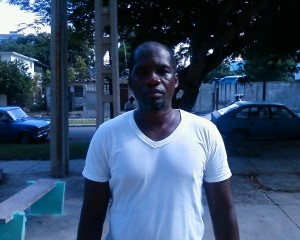
HAVANA, Cuba, August, www.cubanet.org.- Similar to the theme of Steven Spielberg’s movie Minority Report, where someone is imprisoned for crimes they had not yet committed but it was assumed they might commit, the Cuban Criminal Code devotes several articles to “the state of danger and measures of security.”
An index of pre-criminal dangerousness is practically nonexistent in the world. It translates to applying a coercive measure in the present for something a person “might do” in the future. People call it “the law of dangerousness.” It’s common to hear, “They applied ‘the danger’ to him.”
Vicente Rodriguez is a former political prisoner who knows the law for having suffered it firsthand. “Both men and women who are sentenced under the law of dangerousness, when they get to prison, are sent to the galleries for 21 days. After that time they are sent to Prison 1580 or other so-called State ‘settlements’,” he says.

According to Rodriguez, in these “settlements” the prisoners work from Monday to Sunday, “Building buildings for people in the Ministry (of the Interior), and other State interests. And with a minimum wage. The prison has these ‘minimum security’ camps for those charged with ‘danger.’ The ‘danger’ (law of dangerousness) is minimum offense. As it’s not a crime, you go to prison with a job. As an imprisoned worker.”
Rodriguez says that the law is, “Nothing more than a justification to find a workforce.” If the prisoner has a good attitude, it’s possible that a sentence of two years will result in parole after eight months, or a four year sentence is served in just two years. Analyzing the phenomenon, it doesn’t seem convenient to leave the barracks empty. “So if 25 are set free, 25 have to come in. To do the work,” Rodriguez adds.
“A good share of the buildings built after 1959, have been built by prisoners. Alamar, Barlovento, buildings in Guanabacoa, in Cotorro the CIMEQ hospital,” says Rodriguez, who claims to have been in the latter when it was held in Valle Grande in 1983. “There are brigades they take out and they give them incentives, such as passes to visit their family every 45 days. If you work hard in the time you’re working, you get a five-day pass, not three. The slaves are right here.”
In a prosecution for dangerousness, “The person has no right to defend himself, he has a lawyer who is decorative. It seems that the trial is already over, you’re penalized because ‘the factors’ [the investigator/prosecutors] say that you have to be deprived of your freedom for two years.”

To remove the law of dangerousness from the Penal Code, it is necessary that the state respect human rights and particularly the right of every person to be presumed innocent until proven guilty.
It’s worth mentioning that in the world there is a post-criminal dangerousness index, where if a person commits a crime and is found to be mentally unstable, and so cannot serve a sentence but is potentially dangerous; it is as if they had already committed a crime as it is feared they will continue to violate the legal well-being of the society. In that case, a measure is taken such as placement in a hospital.
Writer Ángel Santiesteban has fallen through the net
Recently, the writer Ángel Santiesteban was transferred from prison 1580, where he was serving a sentence of five years for alleged domestic violence — which the artist denies — to one of these “settlements.” As explained above, it is likely that the author of the blog The Children Nobody Wanted will be used as a construction worker.
Through third parties, his blog is still active from prison, so through him we could learn about the forced labor caps which are so similar to the notorious Military Units to Aid Production (UMAP)*, implemented by the Castro regime its early years.
*Translator’s note: UMAP was a set of forced labor camps where people the regime considered “anti-social” or “counter-revolutionary” were incarcerated, including homosexuals, religious believers, and others.
16 August 2013
From Cubanet
